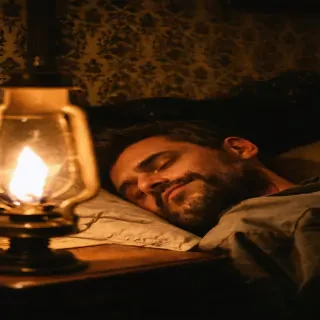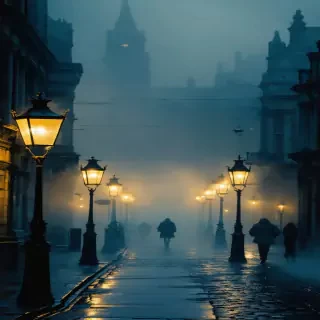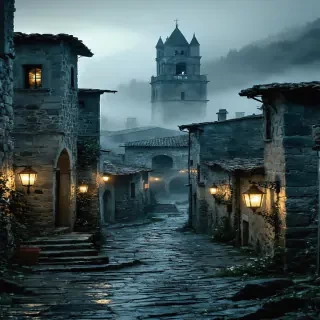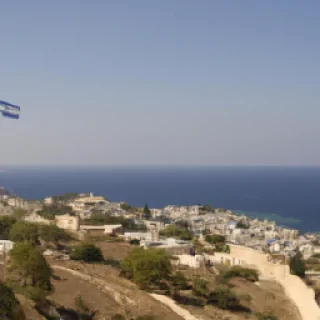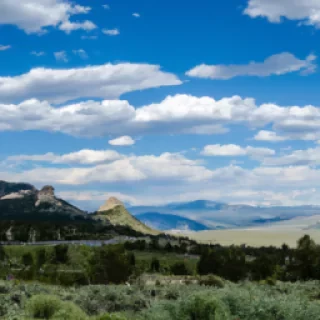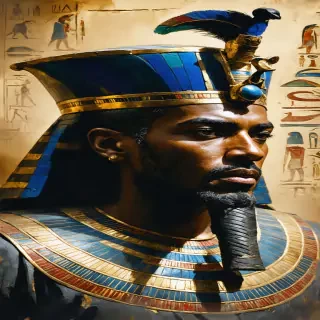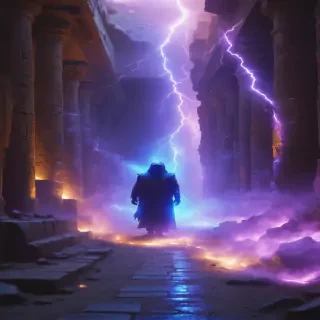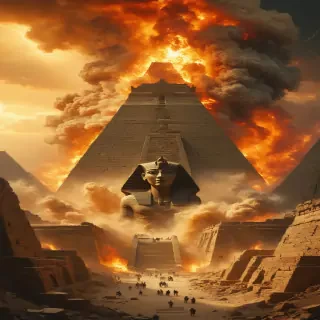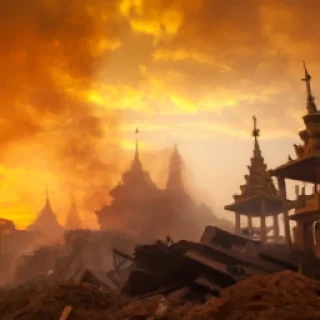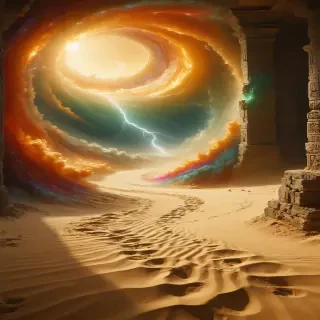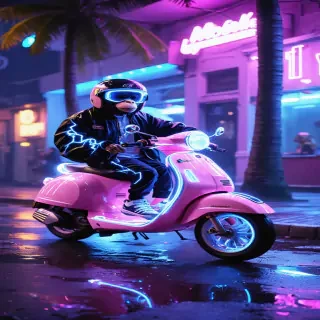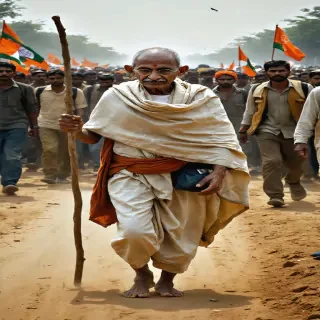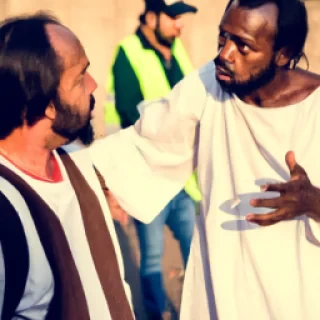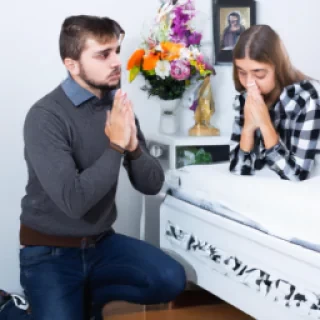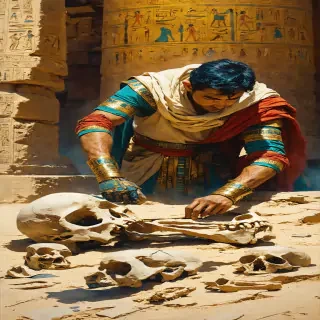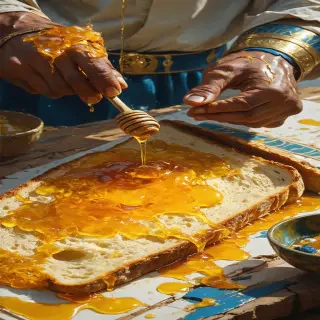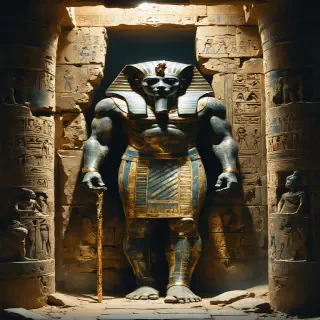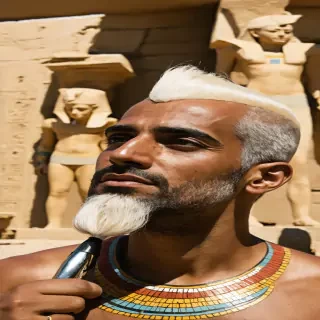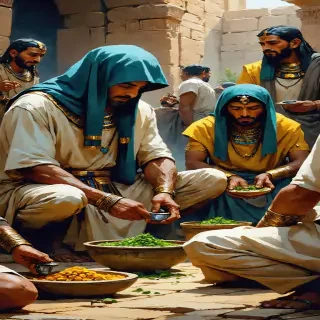Surreal overlay of futuristic London appearing above sleeping man’s bed, transparent time-layers shifting, neon-like glows blended with Victorian room, dreamlike depth, volumetric haze, ultra-real cinematic composite, 9:16.
Cinematic close-up of man asleep in dim Victorian bedroom lit by oil lamp, warm flickering light on his face, shadows dancing on wallpaper, macro clarity on eyelids twitching, shallow depth of field, IMAX realism, 9:16 vertical.
Epic IMAX vertical shot of foggy Victorian London street at night, gas lamps casting golden halos through thick mist, cobblestone reflections, silhouettes passing by, deep atmospheric fog, cinematic desaturated sepia-blue palette, slow dolly-in camera, 9:16.
IMAX vertical shot of abandoned medieval Spanish village at dusk, narrow stone streets, dim lanterns flickering, cathedral tower looming in background, heavy fog rolling in, cinematic desaturated palette, slow push-in camera, volumetric mist, ultra-real textures, 9:16.
israel
Colorado
Ancient Egyptian king in modern world. Ancient Egypt
Ghostly figure in time rift. Ancient Egypt
Time portal in collapsing ruins. Ancient Egypt
Temple collapsing, dust clouds Ancient Egypt
Temple collapsing, dust clouds.
Sand vortex in ancient chamber.
ImagPOV of standing on a mountain cliff in feudal Japan, overlooking a valley, hand resting on katana hilt, cherry blossoms blowing in wind --v 6 --ar 4:5 --style rawine: Silhouette against blazing sky: monkey suspended under rainbow parasail, bare feet dangling above crystal water. Wears reflective sunglasses, orange life-vest styled like designer vest.
Shed with a pdocast studip
Ultra-wide low-angle: matte-black Bugatti Chiron on mirrored helipad, sunset flares. Monkey steps out in 24-k gold bomber jacket, diamond Cuban chain, holding a giant golden banana like a bottle of Ace of Spades. Lens flare blinds the camera.
Imagine: Silhouette against blazing sky: monkey suspended under rainbow parasail, bare feet dangling above crystal water. Wears reflective sunglasses, orange life-vest styled like designer vest.
Wide-angle street level: monkey on candy-pink retro scooter, glowing under violet neon signs. Outfit: black bomber jacket with cyan lightning bolts, LED-lit sneakers, reflective visor helmet half-open. Palm trees sway, wet pavement mirrors the lights.
Wide shot: monkey stepping out of open-door luxury chopper on private island helipad, rotor wash whipping palm fronds. Aviators + leather bomber jacket.
Wide-angle, fashion editorial-style beach shot The monkey lounges on a custom hammock made of black mesh and gold cords, stretched between two modern steel poles on a high-rise balcony overlooking a beach. He wears a designer bomber jacket (white with orange accents), black cargo shorts, high-top sneakers, and reflective mirror shades. Earbuds in, expression calm, he gazes out over the city skyline blending with the sea, exuding a luxury streetwear vibe. His watch flashes subtly in the sunlight — everything about him says cool control.
Wide-angle, fashion editorial-style beach shot The monkey lounges on a custom hammock made of black mesh and gold cords, stretched between two modern steel poles on a high-rise balcony overlooking a beach. He wears a designer bomber jacket (white with orange accents), black cargo shorts, high-top sneakers, and reflective mirror shades. Earbuds in, expression calm, he gazes out over the city skyline blending with the sea, exuding a luxury streetwear vibe. His watch flashes subtly in the sunlight — everything about him says cool control.
Cats
Please generate a picture of cat
"Mahatma Gandhi leading the Salt March, walking barefoot with a staff in hand, surrounded by thousands of peaceful protestors on a dusty Indian road."
People eating alien
Peoply eating alien
man asking Jesus for mercy
father asking for mercy his dead daughter
"A modern-day archaeologist examining Egyptian remains, uncovering evidence of parasites, poor dental health, and early medical practices."
"An Egyptian physician treating an infected wound using honey and moldy bread, an early form of antibacterial treatment."
"A pharaoh’s tomb being opened, revealing a preserved mummy, alongside evidence of diseases and health issues found in royal remains."
"A comedic yet realistic depiction of an Egyptian man shaving his head to avoid lice, while a wig-maker crafts elaborate wigs from real hair."
"A scene of common Egyptians suffering from diseases, with a healer applying herbal remedies while people around them deal with lice and infections."
Lorem ipsum dolor sit, amet consectetur adipisicing elit. Deleniti esse reprehenderit voluptates obcaecati placeat architecto hic ratione ducimus nemo.
Lorem Ipsum is simply dummy text of the printing and typesetting industry. Lorem Ipsum has been the industry's standard dummy text ever since the 1500s, when an unknown printer took a galley of type and scrambled it to make a type specimen book. It has survived not only five centuries, but also the leap into electronic typesetting, remaining essentially unchanged. It was popularised in the 1960s with the release of Letraset sheets containing Lorem Ipsum passages, and more recently with desktop publishing software like Aldus PageMaker including versions of Lorem Ipsum.
It is a long established fact that a reader will be distracted by the readable content of a page when looking at its layout. The point of using Lorem Ipsum is that it has a more-or-less normal distribution of letters, as opposed to using 'Content here, content here', making it look like readable English. Many desktop publishing packages and web page editors now use Lorem Ipsum as their default model text, and a search for 'lorem ipsum' will uncover many web sites still in their infancy. Various versions have evolved over the years, sometimes by accident, sometimes on purpose (injected humour and the like).
Contrary to popular belief, Lorem Ipsum is not simply random text. It has roots in a piece of classical Latin literature from 45 BC, making it over 2000 years old. Richard McClintock, a Latin professor at Hampden-Sydney College in Virginia, looked up one of the more obscure Latin words, consectetur, from a Lorem Ipsum passage, and going through the cites of the word in classical literature, discovered the undoubtable source. Lorem Ipsum comes from sections 1.10.32 and 1.10.33 of "de Finibus Bonorum et Malorum" (The Extremes of Good and Evil) by Cicero, written in 45 BC. This book is a treatise on the theory of ethics, very popular during the Renaissance. The first line of Lorem Ipsum, "Lorem ipsum dolor sit amet..", comes from a line in section 1.10.32.
The standard chunk of Lorem Ipsum used since the 1500s is reproduced below for those interested. Sections 1.10.32 and 1.10.33 from "de Finibus Bonorum et Malorum" by Cicero are also reproduced in their exact original form, accompanied by English versions from the 1914 translation by H. Rackham.
There are many variations of passages of Lorem Ipsum available, but the majority have suffered alteration in some form, by injected humour, or randomised words which don't look even slightly believable. If you are going to use a passage of Lorem Ipsum, you need to be sure there isn't anything embarrassing hidden in the middle of text. All the Lorem Ipsum generators on the Internet tend to repeat predefined chunks as necessary, making this the first true generator on the Internet. It uses a dictionary of over 200 Latin words, combined with a handful of model sentence structures, to generate Lorem Ipsum which looks reasonable. The generated Lorem Ipsum is therefore always free from repetition, injected humour, or non-characteristic words etc.

